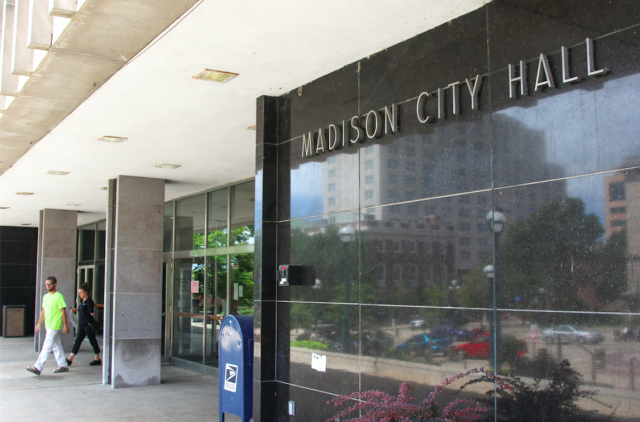






 (Thomas Yonash/Madison Commons)
(Thomas Yonash/Madison Commons)
Three is the magic number for Madison’s Racial Equity and Social Justice initiative.
Developed to meet three goals, the Racial and Equity tool requires a three-step training program and must be used three times in the year by City of Madison departments.
But there’s another number: 280. That’s the number of people who were trained at the beginning of 2016. The city projected doubling the number by the end of the year.
Toriana Pettaway is the Equity Coordinator for the City of Madison and oversees the core team of 40-60 members.
“Ideally, we would hope departments would have used [the tool] at the beginning of a project, any program, anything that requires a decision, a hiring decision, anything,” Pettaway said.
The Racial Equity and Social Justice initiative is designed to expose how the city’s operations will the impact racial and ethnic groups or low-income populations. This includes decisions, policies, programs, practices and budgets.
According to Pettaway, “I provide oversight for the City of Madison Racial Equity and Social Initiative for all 27 agencies; with representation of 2-3 people from each agency that make up the 40 plus member Core Team. I provide oversight, leadership and coordination for the Core Team, Data, Community Connections, Communications, Trainings Tools, Co-Leads and Strategy Teams.”
The city’s goals to improve equity include: providing equity in the policies and budget, ensuring equity in operations and providing equity for the community.
“Through the affirmative action plan, every department is required at the beginning of the year to use the equitable hiring tool,” Pettaway said.
Each department is required to use the tools three times within one year. Thus far, every department has experienced great success with it. The tool can be used throughout any area within the department including a budget, policy or project.
Every department also is required to create an equity team while using the tool as guidance.
City employees also are encouraged to participate in a three-step training program on unconscious bias.
The training begins by viewing unconscious bias from a historical point of view and asking, “How did we get here?” Then employees identify unconscious bias, including how it shows up in action and how it can affect an institution. They also explore how the racial equity tool can be used to combat it.
“We are encouraging everyone to own [unconscious bias] and be a leader by recognizing that it shows up in an institution and taking responsibility for it,” Pettaway said.
The Racial Equity Tool encourages the community to be apart of the decision-making process in order to enact real change and allow for marginalized communities to be heard.
“We are the city and we serve the community. The whole point of the racial equity tool is that you’re leveraging the best results for the community. It cannot be done alone with just staff,” Pettaway said.
|
|
|
Welcome to the Madison Commons, a website designed to provide news and information about all of Madison's neighborhoods and a crossroads for the discussion of community issues. The name comes from the idea of a village commons, a place for news, talk, debate, and some entertainment, too, that's open to everyone.
All rights reserved. Read more about the Madison Commons and its partners.

